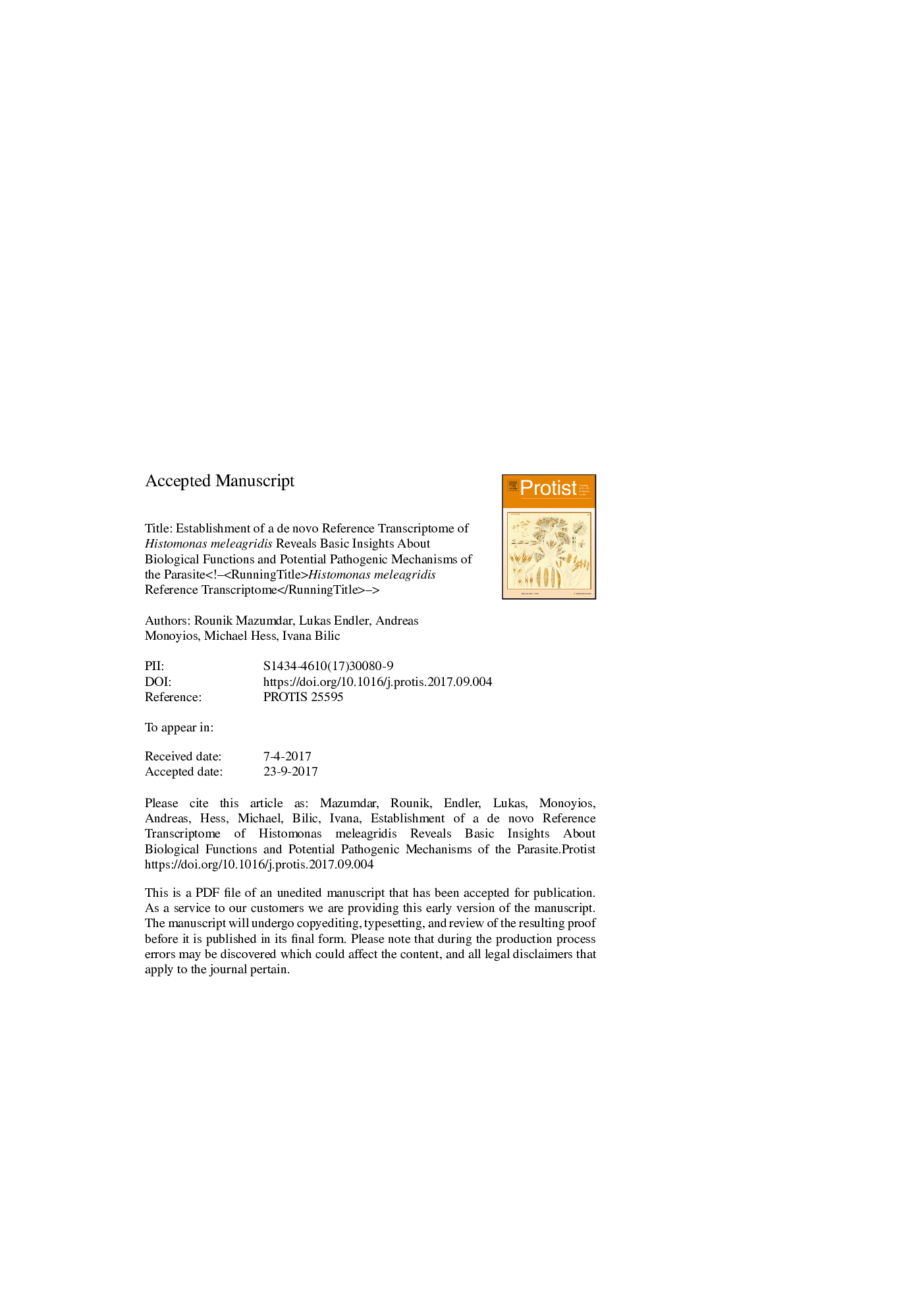| Article ID | Journal | Published Year | Pages | File Type |
|---|---|---|---|---|
| 8392942 | Protist | 2017 | 59 Pages |
Abstract
The protozoan flagellate Histomonas meleagridis is the causative agent of histomonosis in poultry. In turkeys, high mortality might be noticed whereas in chickens the disease is less severe despite production losses. Discovered over a century ago, molecular data on this parasite are scarce and genetic studies are in its infancy. To expand genomic information, a de novo transcriptome sequencing of H. meleagridis was performed from a virulent and an attenuated strain, cultivated in vitro as monoxenic mono-eukaryotic culture. Normalized cDNA libraries were prepared and sequenced on Roche 454 GS FLX resulting in 1.17 million reads with an average read length of 458Â bp. Sequencing reads were assembled into two sets of >4500 contigs, which were further integrated to establish a reference transcriptome for H. meleagridis consisting of 3356 contigs. Following gene ontology analysis, data mining provided novel biological insights into proteostasis, cytoskeleton, metabolism, environmental adaptation and potential pathogenic mechanisms of H. meleagridis. Finally, the transcriptome data was used to perform an in silico drug screen to identify potential anti-histomonal drugs. Altogether, data recruited from virulent and attenuated parasites facilitate a better understanding of the parasites' molecular biology aiding the development of novel diagnostics and future research.
Keywords
LGTHistomonas meleagridisTRICLRRGFPTIMPFTADPROSAdenosine TriphosphateATPadenosine diphosphateBasic Local Alignment Search ToolLateral gene transferPFORBlastTranscriptomepore-forming toxinLeucine rich repeatProtozoade novo sequencingSODSuperoxide dismutaseTCPNitric oxideGene ontologyVirulencegreen fluorescent proteinAdhesion proteinCysteine peptidaseReactive oxygen species
Related Topics
Life Sciences
Agricultural and Biological Sciences
Agricultural and Biological Sciences (General)
Authors
Rounik Mazumdar, Lukas Endler, Andreas Monoyios, Michael Hess, Ivana Bilic,
